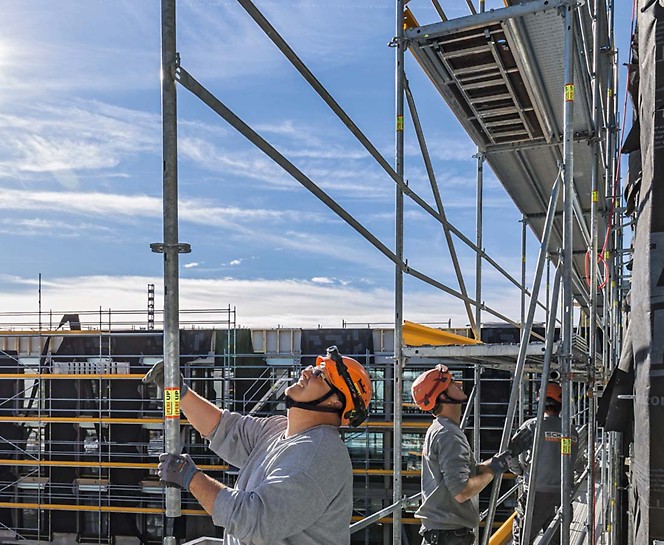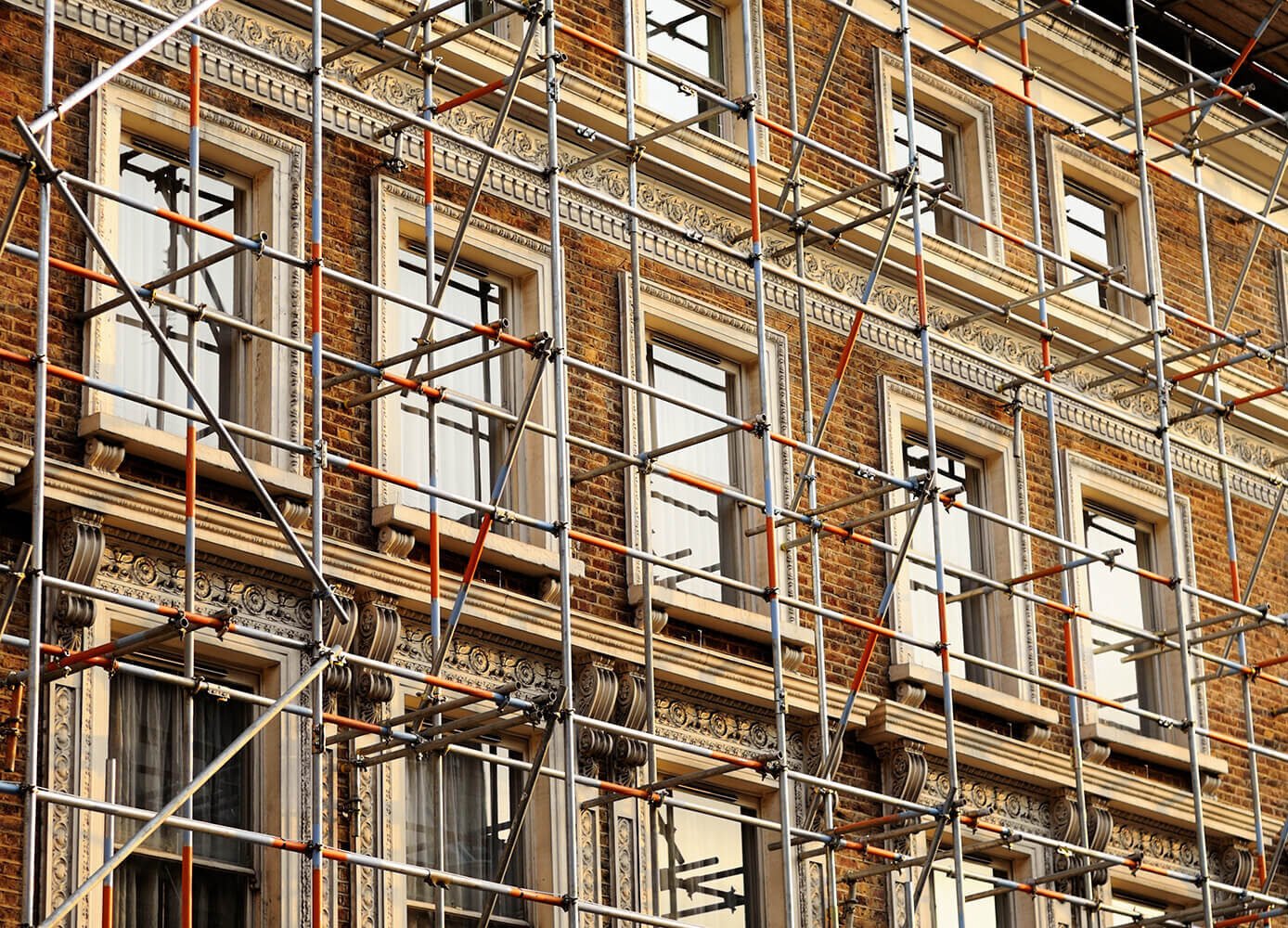Scaffolding Guildford: The Best Option for Your Building and Renovation Projects
Scaffolding Guildford: The Best Option for Your Building and Renovation Projects
Blog Article
Exploring the Numerous Kinds of Scaffolding Utilized in Building And Construction Tasks
The construction industry counts greatly on different kinds of scaffolding to satisfy certain task demands, each offering unique benefits and applications. Standard framework scaffolding provides a sturdy foundation for basic tasks, while put on hold scaffolding is crucial for work on skyscraper frameworks. Other choices, such as system and rolling scaffolding, satisfy effectiveness and mobility, respectively. The cantilever variant shows important in city atmospheres where area is constrained. Understanding the subtleties of these scaffolding types is essential for enhancing security and performance on construction websites, triggering a better assessment of their special qualities and applications.

Typical Frame Scaffolding
Conventional structure scaffolding is one of the most commonly used approaches in the building and construction industry due to its robustness and convenience. This system includes upright and straight frames that are assembled to develop a stable platform for materials and employees. The major parts consist of vertical posts, horizontal ledgers, and angled dental braces, which with each other give a strong structure that can support significant loads.
Among the crucial advantages of typical frame scaffolding is its adaptability to various building and construction jobs, varying from household buildings to huge commercial frameworks. The modular design enables easy setting up and disassembly, making it effective for both long-term and temporary jobs. In addition, the system can be tailored in elevation and size, suiting different building designs and site problems.
Security is paramount in scaffolding applications, and typical frame systems are outfitted with guardrails and toe boards to avoid falls and guarantee worker security. In addition, routine inspections and adherence to safety regulations are crucial in preserving the stability of the scaffold. On the whole, typical structure scaffolding remains a fundamental choice in the building and construction market, offering a trusted system for labor and enhancing overall project effectiveness

Suspended Scaffolding
Put on hold scaffolding uses an one-of-a-kind remedy for building projects that need access to raised surface areas, especially in scenarios where typical structure scaffolding might be impractical. This sort of scaffolding is normally suspended from the roof or upper levels of a framework, utilizing a system of wheels, systems, and ropes to create a working space that can be gotten used to different elevations.
One of the key benefits of put on hold scaffolding is its flexibility. It can be easily repositioned or decreased to accommodate adjustments in building requirements, making it suitable for tasks such as window installment, frontage work, and upkeep on high-rise structures. Additionally, the minimal impact of suspended scaffolding allows for much better usage of ground room in urban settings, where room is frequently minimal.
Security is a critical factor to consider in making use of put on hold scaffolding. Proper rigging and securing systems need to be employed to ensure stability and protect against mishaps. Operators needs to also be learnt the safe use of this tools. On the whole, put on hold scaffolding supplies a effective and effective option for accessing hard-to-reach locations in different building situations, boosting both efficiency and safety and security on website.
System Scaffolding
System scaffolding, often pertained to as a modern solution in the scaffolding sector, is composed of pre-engineered parts that can be promptly set up scaffold yo yo and adjusted for numerous building jobs. Scaffolding. This sort of scaffolding is characterized by its modular design, which permits for adaptability and efficiency on task sites, accommodating different elevations and architectural demands
Usually made from high-strength steel or aluminum, system scaffolding supplies boosted longevity and stability. The components consist This Site of upright articles, horizontal journals, and angled braces, which interconnect firmly, making sure a robust framework. The layout usually integrates standardized installations, streamlining assembly and disassembly procedures, thus lowering labor time and prices.

Rolling Scaffolding
Moving scaffolding is a functional choice to traditional fixed scaffolding, designed for movement and simplicity of use on building sites. This kind of scaffolding contains a platform supported by frames with wheels, enabling employees to conveniently transfer it as required. The movement attribute dramatically improves productivity, as it minimizes downtime connected with constructing and dismantling taken care of scaffolding.
Usually constructed from light-weight products such as aluminum or steel, rolling scaffolding offers a durable yet mobile option for jobs requiring frequent repositioning - Scaffolding. It is specifically helpful in tasks such as paint, drywall setup, and electrical job, where accessibility to various heights and locations is essential
Security is paramount in rolling scaffolding design, with attributes such as locking wheels to prevent unplanned motion when in operation, and guardrails to protect employees from falls. Furthermore, numerous models are adjustable in elevation, fitting numerous project requirements.
Cantilever Scaffolding

The layout of cantilever scaffolding typically entails making use of braces or arms secured to a building or structure, making it possible for the system to expand exterior securely. Security is vital; thus, these scaffolds must be crafted to hold up against ecological conditions and numerous lots. Routine inspection and upkeep are necessary to make sure structural honesty and worker safety.
Cantilever scaffolding is preferred for its adaptability and effective use area, making it a popular selection in metropolitan environments where room restrictions prevail. In addition, it assists in simpler accessibility to high altitudes, eventually adding to the general effectiveness of construction tasks. As with all scaffolding kinds, proper training and adherence to security criteria are important for employees making use of cantilever scaffolding.
Final Thought
Finally, the diverse kinds of scaffolding made use of in building jobs each offer distinct functions customized to specific site needs. Conventional structure scaffolding gives stability, while put on hold scaffolding offers adaptability for raised tasks. System scaffolding assists in quick setting up, and rolling scaffolding enhances wheelchair for varying work environments. Cantilever scaffolding successfully addresses challenges in urban setups. Understanding these scaffolding kinds is vital for optimizing safety and security and productivity in building and construction, eventually adding to the successful completion of tasks.
Typical structure scaffolding provides a durable structure for basic jobs, while suspended scaffolding is important for job on skyscraper structures.Moving scaffolding is a functional choice to typical set scaffolding, developed for flexibility and simplicity of use on construction sites. As with all scaffolding kinds, correct training and adherence to security requirements are important for workers using cantilever scaffolding.
Traditional structure scaffolding gives security, while suspended scaffolding offers versatility for raised tasks. System scaffolding helps with fast setting up, and rolling scaffolding improves movement for differing job atmospheres.
Report this page